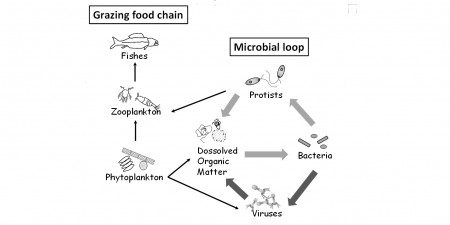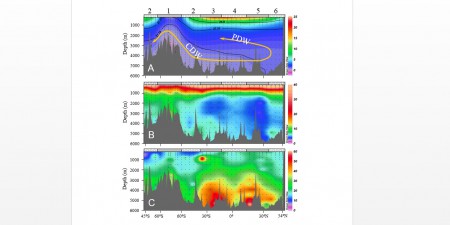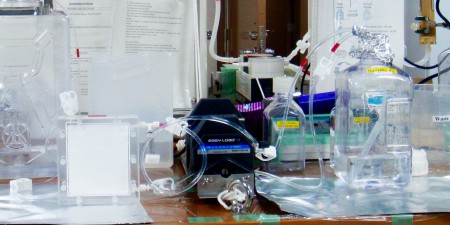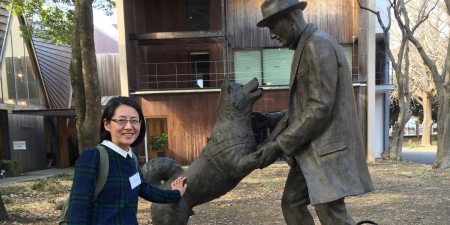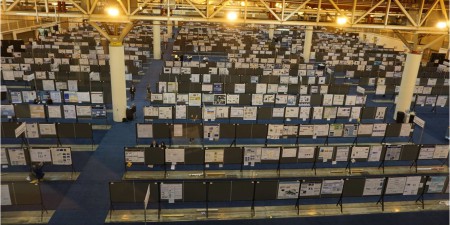My Research:Role of Viruses in the Dynamics and Functions of Marine Microbial Communities-Research Fellow Yanhui Yang
Microorganisms constitute more than 90% of the living biomass in the sea, and are a major force of the transfer and transformation of material and energy in marine biogeochemical cycles. In the microbial communities, about 20% of the biomass is shunted from exporting out of the system by virus lysis and thus finally increases system respiration (Fig. 1). Therefore viruses play important roles in the dynamics and functions of marine microbial communities.
I have been studying in 1) the spatio-temporal distribution patterns of viruses and microbes, and 2) the virus-induced mortality pressure on microbes, in different marine environments. The abundance relationships between viruses and microbes (bacteria, cyanobacteria, and eukaryotes) over spatial or temporal scales help to identify principal mechanisms that viral populations and their relationship with host microbes are controlled. For example, the remarkably high virus-to-bacteria abundance ratios (VBRs) in the deep ocean suggest that besides lysis on bacteria, transport by meridional overturning circulation largely influences viral distribution patterns. The ecological roles of viruses in the microbial loop are studied by incubation experiments including modified dilution method, virus-reduction method, etc. Comparison of viral production and the relative strength of virus-induced bacterial mortality in different oceanic environments and over temporal scales could help to explain the mechanisms and controls microbial community structure and functions response to environmental changes.
(Research Fellow – Yanhui Yang)
Fig. 1 Role of viruses in microbial loop and material cycles in marine environments
Fig. 2 Distribution of viral abundance (B) and virus-to-bacteria abundance ratios (C) revealed the influence of transport by meridional overturning circulation on viral distribution patterns (Yang et al. 2013).
Separating and concentrating viruses and microbes for incubation experiments
